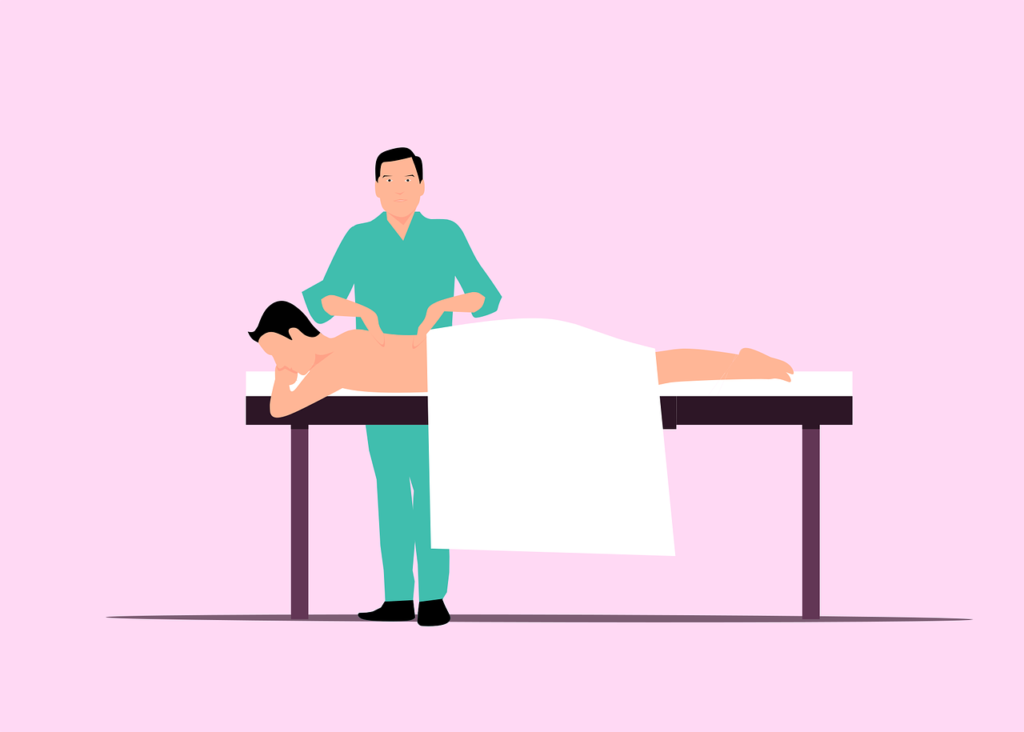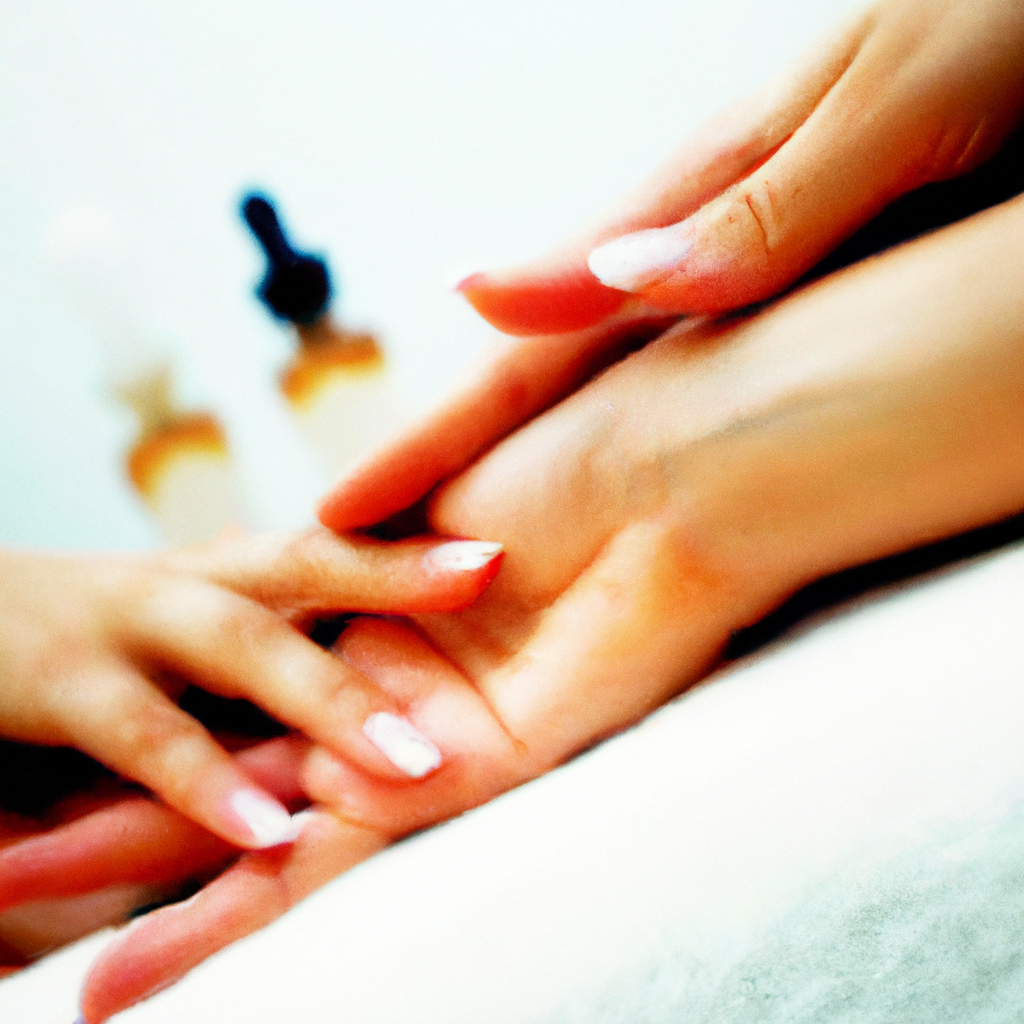In the world of massage therapy, there is a common misconception concerning the boundaries of professional touch. Many wonder if massage therapists go beyond the realm of relaxation and venture into sensitive areas. The question that lingers is, “Do massage therapists massage your private parts?” It’s understandable why this topic might provoke curiosity and concern, but rest assured, this article aims to shed light on the subject and address any misunderstandings that may exist.

This image is property of pixabay.com.
Protecting Client Privacy and Boundaries
As a massage therapist, one of the most important aspects of your practice is ensuring the privacy and maintaining appropriate boundaries with your clients. This not only helps to establish trust and create a comfortable environment, but it also upholds the professional ethics that are expected in this field.
It’s crucial to understand the scope of your practice as a massage therapist, which means being aware of the limits and boundaries that should be respected during a session. While massage therapy is a highly effective and beneficial treatment, it is crucial to remember that it is not a form of sexual contact or intimate interaction.
Understanding Professional Ethics
Massage therapy falls under the umbrella of healthcare, and just like any other profession in the healthcare industry, it is governed by a set of professional ethics. These ethics serve as a guideline to ensure the wellbeing and safety of both the therapist and the client.
Professional ethics in massage therapy emphasize the importance of maintaining client privacy, respecting personal boundaries, and providing a safe and comfortable environment. These principles are intended to ensure that the therapist acts in the best interest of the client and upholds the standards of professionalism in the field.

This image is property of pixabay.com.
Different Types of Massage
When it comes to massage therapy, there are various techniques and modalities that are used to address different needs and preferences. Here are some of the most common types of massage:
Swedish Massage
Swedish massage is the most common type of massage practiced in the United States. It involves long, gliding strokes and kneading movements to promote relaxation, increase circulation, and relieve muscle tension.
Deep Tissue Massage
Deep tissue massage targets the deeper layers of muscles and fascia. It uses slower, more firm pressure to release chronic muscle tension and knots, as well as to improve mobility and flexibility.
Sports Massage
Sports massage is specifically designed to help athletes recover from injuries, prevent injuries, and enhance their athletic performance. It incorporates techniques such as stretching, compression, and deep tissue work to address the specific needs of athletes.
Hot Stone Massage
Hot stone massage involves the use of heated stones placed on specific areas of the body to promote relaxation and relieve muscle tension. The heat from the stones enhances the benefits of the massage, allowing for a deeper sense of relaxation.
Thai Massage
Thai massage is a unique form of bodywork that combines acupressure, yoga-like stretches, and deep compressions. It is performed on a mat on the floor, with the client fully clothed, and it aims to release tension, improve flexibility, and restore balance in the body.
Massage Therapy Techniques
Within each type of massage, there are various techniques that a therapist may utilize to address specific issues and provide targeted relief. Here are some commonly used massage therapy techniques:
Effleurage
Effleurage refers to long, gliding strokes that are used to warm up the muscles, promote relaxation, and improve blood circulation. It sets the foundation for the rest of the massage session.
Petrissage
Petrissage involves kneading and squeezing the muscles to relieve tension, increase flexibility, and promote the elimination of waste products from the tissues. It can be beneficial for releasing knots and tightness in the muscles.
Friction
Friction is a technique that involves using deep pressure and circular movements to break down adhesions and scar tissue, improving mobility and promoting healing. It can be particularly effective in treating chronic pain and injuries.
Tapotement
Tapotement refers to a rhythmic tapping or chopping motion that is applied to the muscles using the hands or fists. This technique helps to stimulate and invigorate the muscles, increase blood flow, and enhance overall circulation.
Vibration
Vibration involves using rapid oscillating movements to stimulate the muscles and tissues. It can help to release tension, improve circulation, and relieve muscle spasms.

This image is property of pixabay.com.
Contraindications and Informed Consent
While massage therapy is generally safe and beneficial, there are certain situations in which it may not be appropriate or advisable. These are known as contraindications, and it is important for the therapist to be aware of them and communicate them to the client.
Contraindications to Massage
Contraindications to massage include acute injuries, contagious diseases, fever, certain skin conditions, and certain medical conditions such as thrombosis or deep vein thrombosis. It is crucial for the therapist to conduct a thorough intake assessment to identify any contraindications and adjust the treatment accordingly.
Importance of Informed Consent
Informed consent is a vital aspect of the client-therapist relationship. It involves the therapist providing detailed information about the treatment, its benefits, potential risks and side effects, and obtaining the client’s consent before proceeding.
By obtaining informed consent, the therapist ensures that the client is aware of what to expect during the session and can make an informed decision about their treatment. It also helps to establish clear communication and trust between the therapist and the client.
Client Communication and Boundaries
Efficient communication between the therapist and the client is crucial to ensure that the client’s needs and preferences are met during the massage session. Clear and open communication also helps to establish and maintain appropriate boundaries, which are essential for a professional therapeutic relationship.
Discussion of Boundaries
Before the massage session begins, it is important for the therapist to have a discussion with the client about their boundaries and expectations. This allows the client to communicate any concerns or preferences they may have and helps the therapist understand how to tailor the session to meet the client’s needs.
Communication during the Massage
During the massage, the therapist should regularly check in with the client regarding pressure, comfort, and any other concerns. This allows the client to provide feedback and ensures that the therapist can make any necessary adjustments to enhance the client’s experience and achieve optimal therapeutic results.

Working with Undraped or Draped Clients
Draping is a standard practice in professional massage therapy and is designed to ensure client comfort, modesty, and adherence to professional ethical standards. However, in certain situations, the therapist may need to work with undraped clients. Here’s what you need to know about draping and working with undraped clients:
Understanding Draping
Draping involves the use of sheets or towels to cover the client’s body during the massage, exposing only the area being worked on. This not only provides the client with a sense of comfort and security but also maintains professional boundaries and prevents any form of inappropriate contact.
Client Comfort and Modesty
The therapist should always prioritize the client’s comfort and modesty. The client should feel at ease throughout the session, and the therapist should be respectful of their personal boundaries. If the client expresses discomfort or requests additional draping, the therapist should promptly address their concerns and make the necessary adjustments.
Understanding Massage Therapy Licensure
Massage therapy licensure is a critical aspect of the profession, ensuring that therapists meet specific requirements and adhere to professional standards. Here’s what you need to know about licensure in the field:
Licensure Requirements
Licensure requirements for massage therapy vary depending on the state or country in which you practice. They typically include completing an accredited massage therapy program, passing a licensing exam, and fulfilling specific continuing education requirements.
Regulatory Bodies and Associations
Regulatory bodies and professional associations play a significant role in ensuring the integrity and professionalism of the massage therapy field. They establish and enforce standards of practice, provide resources and support for therapists, and promote ethical conduct within the profession.

Training and Education for Massage Therapists
To become a skilled and knowledgeable massage therapist, it is essential to undergo proper training and education. Here are some key aspects of training and education for massage therapists:
Massage Therapy Programs
Massage therapy programs vary in length and curriculum, but they generally provide comprehensive training in anatomy, physiology, various massage techniques, ethics, and business practices. Completing a reputable and accredited program is essential to obtain the necessary knowledge and skills to practice safely and effectively.
Continuing Education
Continuing education is an ongoing requirement for massage therapists to maintain their licensure and stay updated on the latest developments in the field. It allows therapists to deepen their knowledge, expand their skill set, and provide the best possible care for their clients.
Massage Therapy for Medical Conditions
Massage therapy can offer significant benefits for individuals with various medical conditions. Here are two examples:
Massage and Chronic Pain
Massage therapy can be a valuable tool for managing chronic pain. By promoting relaxation, reducing muscle tension, and improving circulation, it can provide relief from conditions such as fibromyalgia, arthritis, and back pain. However, it is important for the therapist to conduct a thorough assessment and tailor the treatment plan to meet the specific needs of the client.
Massage Therapy for Cancer Patients
Massage therapy can also be beneficial for individuals undergoing cancer treatment. It can help manage symptoms such as pain, nausea, anxiety, and depression, as well as improve overall quality of life. However, it is crucial for the therapist to have specialized training in oncology massage and collaborate closely with the client’s healthcare team.
Recognizing Unprofessional Behavior
Unfortunately, there may be instances where a massage therapist exhibits unprofessional behavior or engages in inappropriate conduct. It is essential to be aware of these situations and know how to respond.
Reporting Inappropriate Conduct
If you encounter a massage therapist who engages in inappropriate behavior or breaches professional boundaries, it is important to take action. You should report the incident to the appropriate regulatory body or professional association, as they have established protocols for addressing and resolving such issues.
Promoting a Safe Environment
As a massage therapist, it is your responsibility to foster a safe and comfortable environment for your clients. This includes maintaining professional boundaries, respecting client privacy, and upholding the highest standards of ethical conduct. By promoting a safe environment, you contribute to the overall integrity and reputation of the massage therapy profession.
In conclusion, protecting client privacy and boundaries is of utmost importance in the field of massage therapy. By understanding the scope of your practice, adhering to professional ethics, and implementing effective communication strategies, you can ensure that your clients feel safe, respected, and well-cared for during their massage sessions. By continuously educating yourself, maintaining licensure requirements, and staying updated on the latest developments in the field, you can provide the highest quality of care and promote a positive and nurturing environment for your clients.
